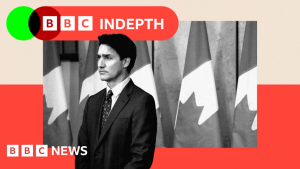Have you ever been to a Starbucks where every single customer belted out the lyrics to “Sweet Caroline” in unison, mid-latte? I have. Even more interestingly, it was on a cruise — Norwegian Encore, to be exact — where the ship’s atrium singalong shenanigans spilled over into the nearby onboard coffee outpost.
That’s just one example of how boisterous my voyage was. If you’re looking for an enjoyable big-ship experience on your next sailing, the good news is that Norwegian Encore, one of Norwegian Cruise Line’s Breakaway Plus-class ships, delivers fun in the form of adrenaline-pumping top-deck activities, state-of-the-art gaming, Broadway-caliber theater performances and plenty of social activities.
The bad news is that you’ll pay extra for a lot of it. (Thankfully, the singalongs are free.)
If you’re wondering whether you’d enjoy a sailing on Norwegian Encore or one of Norwegian‘s other similar ships, keep reading. I’ll share a rundown of what it was like to experience the vessel’s cabins, restaurants, shore excursions, entertainment and more.
Overview of Norwegian Encore
Norwegian Encore can offer something for everyone due to its large size and impressive array of amenities. The ship can carry 4,544 passengers, and among them you’ll find couples, friend groups and families.
The 169,116-ton mass-market vessel is generally bustling. It’s great for joiners, offering games like bingo and Deal or No Deal, dance classes, parties and more, but it also has quiet spaces like a library and card room, a spa with a thermal suite and the Vibe Beach Club, which is for adults only.
Of particular note is 678 Ocean Place, a three-story promenade that rises from Deck 6 to Deck 8 and serves as the ship’s central hub. There, you’ll find several bars, lounges and shops, as well as the casino and the ship’s comedy club, art gallery, photography studio and, not far away, the atrium, where the guest services desk is located.
Another shoutout-worthy space is the Galaxy Pavilion, a giant indoor space on Deck 17 that’s packed with the latest virtual-reality experiences and video games, as well as a 4D cinema and an escape room. On the two outer decks directly above it, passengers will find laser tag and Speedway, the ship’s go-kart track. All of those attractions cost extra.

Daily Newsletter
Reward your inbox with the TPG Daily newsletter
Join over 700,000 readers for breaking news, in-depth guides and exclusive deals from TPG’s experts
What I loved about Norwegian Encore
Choir of Man
Although Norwegian has phased out many of its Broadway shows, it does still offer a couple of Broadway and off-Broadway musicals, including “Choir of Man,” a West End favorite about a group of Irish men who converge at a local pub to feel less alone when dealing with life’s obstacles. Audience interaction includes bringing some attendees up on stage for drinks, as well as singing and dancing in the aisles. It’s free, but you’ll need to make reservations if you don’t want to miss out. It was offered a couple of times on our voyage.
Food Republic
My meal at Food Republic was easily the best extra-fee meal I had on my sailing. The venue features street food from various countries but leans heavily Asian. I was surprised to find plenty of open tables when I showed up for my reservation but assumed it was due to the restaurant’s out-of-the-way location on Deck 8 forward and the fact that its description on the cruise line’s app is vague.
If you have a dining package, save one of your meals for this place; if you don’t, it’s worth the splurge. Trust me: You won’t be disappointed.
The live music
I don’t normally seek out live music, but I found myself unexpectedly enjoying performances throughout the ship. Standouts were the daytime performers in The Atrium, who played Green Day, Coldplay, Goo Goo Dolls, Incubus and other bands that took me straight back to my high school playlists. During my dinner at Q, the ship’s barbecue restaurant, a band inexplicably played an entire set of ABBA tunes while we ate. It was an odd choice of genre for that venue, but it was fantastic nonetheless. Everyone was on their feet dancing by the end of the meal.
The escape room
Although it costs $15 per person, Norwegian Encore’s escape room experience, “Bamboozled,” is a terrific way to spend an hour of your day, especially at sea. Sign up in advance at the front desk in the Galaxy Pavilion on Deck 17 aft, and you’ll be placed into a room where you’ll have 45 minutes to complete a series of puzzles to save a sunken ship from its watery grave. (You will be grouped with other passengers if your party isn’t large enough to fill the room.)
Note that the experience begins with a quick virtual-reality primer that gives you the backstory. If you’re prone to motion sickness, opt out of that part. You can still listen to the story without the VR headset.
Tip: There are only six sets of VR goggles, so reservations are usually capped at six people per time slot. However, the room can hold up to 10 players. If you’re having trouble making reservations, tell the person working the desk that you’re happy to skip the VR part if they can squeeze you in.
What I didn’t love about Norwegian Encore
The extra fees
Make no mistake: Norwegian Cruise Line’s ships are fun, with lots to see, do, eat and drink. But you’re going to pay to access most of the best offerings, and at $20 per person, per day, for standard cabins, NCL’s daily gratuities (which are automatically added to each person’s onboard bill) are the highest in the industry.
So many things cost extra on Norwegian Encore, from top-deck laser tag and go-kart racing to the games at Galaxy Pavilion, as well as bottled water and coffee (even if you have the drink package that’s included in most fares). The added fees could quickly amount to a lot of money — especially if you’re traveling with kids.
Activity-related quirks
During my sailing, I saw a few things that made little sense. On the first night, my travel companion and I checked out the Levity Comedy show in the main theater. It was decent, but when we went to the Social Comedy Club a couple nights later to see the same two comedians perform, only one had new material to share.
Other activities were held in odd locations. For example, singalongs and gameshows like “Deal or No Deal” were held in the atrium. Although it’s a central location, the space felt too small to accommodate everyone who wanted to join in or watch. Crowds often ballooned out to the sides, making it awkward for people just passing through.
The one experience that took the cake for the most absurd onboard rule was the water park. If you want to ride the water slides, you can’t wear bathing suits with metal or plastic details. That includes women’s suits with adjustable straps and men’s trunks with metal eyelets or plastic ends to the drawstrings.
The latter prevented most people from riding, which was a shame. The crew member stationed at the ride’s entrance asked men to pull down their waistbands so he could look for the plastic. Riders whose suits had it were banned, even if it was on the inside and covered by external material. Several people returned in their underwear, which seemed inappropriate.
The ship’s Alaska particulars
Of the Norwegian ships sailing Alaska voyages, Norwegian Encore has one of the least desirable (and, therefore, most affordable) schedules, both in terms of when it arrives in port and where it docks.
My seven-day cruise traveled round trip from Seattle and visited Juneau, Skagway and Ketchikan in Alaska and Victoria in Canada’s British Columbia with a scenic Glacier Bay sea day thrown in. The ports themselves are great and absolutely on many cruisers’ bucket lists. However, the scheduled arrival times and some of the related logistics had me scratching my head.
We didn’t dock in Juneau until after 2 p.m., which meant anyone hoping to schedule a full day of salmon fishing — a popular excursion in Alaska — was out of luck. In Ketchikan, the ship docked seven miles outside of town, so because we didn’t book an excursion, we spent 40 minutes on shuttle buses to get to the main area and back. We also waited 55 minutes in line to catch the return shuttle, so cumulatively, travel from and back to the ship wasted more than 90 minutes of the mere five hours we had in port. (The wait for the return was so bad that enterprising locals offered to drive passengers to the ship in their personal vehicles for $20 a person.)
Our call on Victoria — a technical requirement to satisfy the United States’ Passenger Vessel Services Act — was only three hours, from 8 to 11 p.m., when most things in the city were already closed.
The port valet service
Ships that sail from Seattle can offer a port-facilitated luggage valet service to passengers flying home after they leave the ship. It allows cruisers with flights to leave their bags outside their cabin doors the night before disembarkation and pick them up again in their final destinations after their flights. The service costs nothing, but passengers must pay the associated checked bag fees levied by their airlines.
My companion — who receives free checked bags with his airline, thanks to a co-branded credit card — decided to try the service. On disembarkation morning, he noticed a $35 checked bag charge on his onboard bill, despite noting on the required paperwork that his bags should be free. (There’s a section on the form to mention that and explain why, which he did.)
When he asked guest services to remove the charge, he was told he’d have to take it up with the port. He eventually got his money back, but it wasn’t without several phone calls and emails that negated any convenience the service was supposed to provide.
Norwegian Encore cabins and suites
Norwegian Cruise Line offers an array of cabin types, ranging in size from 99-square-foot studios for one person to insides, outsides, balconies and 1,459-square-foot Owners Suites in The Haven — the line’s exclusive suite enclave, which offers access to a private dining room, pool, sun deck, concierge service and more.
The ship also has a total of 43 wheelchair-accessible cabins across several categories, including inside, outside, balcony, suite and The Haven. Accessible rooms feature shower stools and toilet seat risers in the bathrooms, as well as extra square footage and wider doorways.
My room was a 214-square-foot standard balcony cabin with a 38-square-foot balcony. It was comfortable and elegantly appointed, and the only gripes I have are related to storage.
Although our specific cabin was designed to accommodate up to three people, we had trouble fitting all our clothes in the closet and drawers with just two of us. The bathroom had ample storage, but the shelving wasn’t deep, forcing us to take everything out of our toiletry bags to store it there. The closet was also in a strange location next to the bed, and due to the sliding-door setup, only one side could be accessed at a time.
In addition to a queen-size bed that can convert into two twins, our room was outfitted with two nightstands and reading lamps, each with a USB port for charging; a sleeper sofa with drawer storage; a desk/vanity area with a mirror, three 110-volt North American-style outlets and one European 220-volt outlet, drawers and shelves and a minibar stocked with for-fee water in glass bottles and cartons; and a small block stool with a built-in removable lap tray for working or dining.
A wall-mounted TV offered NCL-produced programming, such as ship positioning, port information and shopping talks. It also offered for-fee on-demand movies, a small selection of live TV channels and interactive functions that allowed me to check my onboard bill.
The oddly placed closet, which ran the length of the wall on one side of the bed, offered two sides for storage — one with a bar to hang clothes and another with shelving for shoes, hats or items you’d like to fold. It also contained a code-operated safe for small valuables.
The hangers were the wooden kind that don’t have hooks at the top — the ones with metal rods that lock into permanent mounting hardware so people can’t steal them. I find that they always make hanging anything more cumbersome. The closet didn’t have enough hangers for all our clothing, so I asked my cabin steward for a few extras. He brought me the cheap plastic kind, which left bumps in the shoulders of my shirts.
The bathroom offered a single sink with several narrow shelves, a toilet and a plexiglass shower with a removable showerhead. My cabin type also came with bathrobes and upgraded toiletries, which included Bulgari shampoo, conditioner, hand cream and aftershave balm, as well as L’Occitane bar soap. A hair dryer was available via a mount under the main cabin vanity, next to the block stool.
The balcony was tiny but sufficient for excellent sea views. It was furnished with a small drinks table and two chairs with adjustable backs.
Norwegian Encore restaurants and bars
Norwegian Cruise Line is known for pioneering “anytime dining” on cruise ships — eating whenever you want, wherever you want, with whomever you want. Passengers are not assigned set dining times, and you can eat in any of Norwegian Encore’s main dining rooms or extra-fee restaurants by making a reservation or showing up when you’re hungry. Other meal options include a complimentary buffet and 24-hour room service that comes with a delivery fee.
If you expect to dine at several added-fee alternative restaurants during your cruise, purchasing a dining package might save you some money. Norwegian’s packages include a set number of meals at any of the extra-fee restaurants. The best tactic is to save your prepaid meals for the most expensive restaurants (Cagney’s Steakhouse, Food Republic and Teppanyaki). All restaurants are priced a la carte if you don’t have a dining package, except Teppanyaki (which has a $59 per person cover charge).
The line also has drink packages that are a good value if you consume a lot of soda or alcohol. A basic beverage package comes with most cruise fares but does not include specialty coffees or bottled water. (You’ll need to upgrade for an additional fee for those to be included.)
Norwegian Encore restaurants
Free restaurants
Taste, Savor and The Manhattan Room are Norwegian Encore’s three main dining rooms. The first two — located directly across from one another on Deck 6 — are open for breakfast, lunch and dinner daily. Manhattan, on Deck 7, is open for dinner only. Menus are the same across all three.
I was impressed with the food quality in the main dining rooms. The menus had a nice variety, and the food arrived freshly prepared and generally tasty with just the right amount of seasoning. For breakfast, I had a delicious omelet, hashbrowns and bacon. For lunch, my picks included a caprese salad and Baja fish tacos. For dinner, I enjoyed crab and cream cheese wontons, bruschetta and a veggie burrito.
Another gratis option is The Local Bar & Grill, a sports bar-style eatery that’s open 24 hours a day and features pub grub like chicken wings, fish ‘n’ chips, Cobb salad, pasta carbonara, chili, BLTs, burgers and fries. It also serves amazing breakfast sandwiches in the mornings.
The Local is often crowded because it’s free and the choice for anyone who wants a waiter-served meal not in one of the fancy dining rooms. It’s also located just above the stage and screen area in the main atrium, so it draws crowds wanting to sit and watch what’s happening below.
Other places for free fare include the Garden Cafe buffet, which has so many different cuisine stations it will make your head spin — in a good way. They include everything from cereal, pancakes and made-to-order omelets at breakfast to burgers, cold cuts, cheeses, Indian food and salads at lunch and carving stations and pasta at dinner. Fruit, soft-serve ice cream and other desserts are readily available, too.
A smaller buffet can be found in the Observation Lounge, which offers light bites throughout the day.
Free for and accessible only to passengers booked in Norwegian Encore’s The Haven suite enclave, The Haven Restaurant is a serene escape from the usual bustle of restaurants elsewhere on board. I dined there one night, and the food quality was superior to the ship’s other available dining options. The crabcakes and lobster tail were phenomenal, and the intimate setting and elevated decor gave the space an upscale ambience.
For-fee restaurants
While I was impressed with Norwegian Encore’s included restaurants, I found the extra-fee venues to be less consistent. For example, I absolutely loved street food restaurant Food Republic but was underwhelmed by the Los Lobos Mexican eatery — and I adore Mexican food.
Let’s start at the top. Food Republic, hidden away on Deck 8 forward, was my favorite alternative dining option on Norwegian Encore. A light and airy space, it offers a selection of street food from Korea, Mexico, China, Germany, Thailand, Vietnam, Peru and Japan. You might even find some Italian and Hawaiian influences. Absolutely do not miss the edamame, pork belly bao buns and chicken teriyaki.
If you have a dining package, you can select four items per person. You can pay per item if you’d like extra. Alcohol options include sake by the bottle or glass and a small selection of cider and beer. The Food Republic cocktail menu has only five drinks, but it was difficult to choose among them. I went with the Thai rum tonic and wasn’t disappointed.
American Diner is an open-air eatery on Deck 17, near Galaxy Pavilion and up one flight of stairs from the Ocean Loops waterslide entrance. It was chilly on our Alaska sailing, but heat lamps kept us warm. I absolutely love the decor, which features a black-and-white checkered floor, booths that look like old Chevy cars and tabletops covered in a license plate print.
I ordered a burger with fries and a milkshake when I ate there for lunch, and it was the perfect bit of comfort food to hold me over until dinner. Although the American Diner’s fare was tasty, you can order similar items (minus the milkshake) for no fee at The Local. Your dining package will cover a meal at American Diner, but milkshakes still cost extra.
Q Texas Smokehouse embraces all things barbecue. If the smell isn’t enough to draw you in, let yourself be carried by the wonderful live music that accompanies the experience each night. For dinner, I started with tortilla soup and fried green tomatoes before moving on to pulled pork with cornbread, pickles, potato salad and coleslaw. It was just OK — not the best barbecue I’ve had, but also not the worst.
Los Lobos was my least favorite of the extra-fee venues I tried. I was extra sad because Mexican food is one of my favorite cuisines. I thoroughly enjoyed the fresh guacamole, which our waiter prepared tableside, but the tortilla chips were too salty. The fish tacos I ordered for my main course were unappetizingly wet and soggy, which caused the soft shells to completely disintegrate, necessitating the use of a fork. The service was also hit-or-miss, with our waiter often disappearing for long stretches.
Other added-fee options include a teppanyaki venue called, unoriginally, Teppanyaki; Italian restaurant Onda by Scarpetta; seafood eatery Ocean Blue; Cagney’s Steakhouse; and Le Bistro if you’re hankering for French cuisine.
Reservations are recommended at all extra-fee restaurants, and if you don’t make them before you board, you could be out of luck. I waited until the evening of the first day of my sailing, and I ended up with some horrendously late dining times.
If you’re looking for coffee, ice cream or a between-meal snack, added-cost options include a full Starbucks, found just off the atrium, across from the guest services desk on Deck 6; Coco’s for chocolates, mini-cakes and ice cream, including sundaes (try one of the gargantuan milkshakes for a true splurge); The Bake Shop, which offers cupcakes, chocolates and macarons; and Dolce Gelato, which is attached to The Bake Shop and serves up a few flavors of gelato.
You can order room service 24/7, but note that there is a $7.95 delivery charge attached. Room service breakfast, including Continental selections, comes with a $4.95 delivery fee. Both fees are per order, so you’ll pay $7.95 (or $4.95) whether you order one item or several.
Norwegian Encore bars
If you’re in search of a drink, the best variety is on Deck 8, where passengers will find dedicated wine, whiskey and mojito bars in proximity to several alternative eateries and lounges that are worth discovering.
The Cellars Wine Bar, which has a menu of more than 300 wines, is attached to Italian restaurant Onda by Scarpetta, making it easy for waiters to serve your favorite vintage with your pasta. Tastings are offered for a fee.
Across the hall, Maltings Whiskey Bar, which has a rich ambience and an impressive selection of whiskeys, is flanked by The Humidor Cigar Lounge, where passengers can smoke stogies while sipping cognac, and The Cavern Club, where you can order a cocktail while listening to live performances by a Beatles tribute band.
Two of my favorites, also found on Deck 8, are the Sugarcane Mojito Bar and The District Brew House. Sugarcane has an entire menu of interesting takes on the popular minty drink. My favorite was the Coco Mojito, which is a mix of coconut rum, simple syrup, mint bitters and coconut water. (An outdoor area offers eco-friendly drinks like the Pineapple Surplus and the Sustainable Spritz, which are made partially from kitchen leftovers like fruit peels and juices.)
The District Brew House — which is tucked away at the front of the ship, across from Food Republic — has two dozen beers on tap, as well as dozens more bottled choices. They include standards like Stella Artois, Heineken and Angry Orchard; local selections like Alaskan Amber and Alaskan Husky; and even NCL’s own brew, 66 by Norwegian. (The line also has branded 66 spirits, found at select onboard bars.)
Other standard bars include the Atrium Bar, which is central to the ship’s social hub; the Skyline Bar, which serves the Encore Casino; Mixx Bar, located between the Taste and Savor main dining rooms; and the A-List Bar, which is the perfect spot for a pre-dinner drink when you’re dining at either Cagney’s or Los Lobos.
Norwegian Encore entertainment
Entertainment on Norwegian Encore is well above average for a mainstream cruise line. In addition to an astounding number of daily activities like game shows, trivia and art classes, passengers can enjoy top-deck fun that ranges from laser tag to waterslides.
Evening shows include Broadway-caliber musicals, comedians, magicians and more. Here’s a roundup of what you shouldn’t miss.
Norwegian Encore activities
Although there are lots of activities on the daily schedule, complimentary stand-outs for me were trivia, balloon-twisting sessions, fruit- and vegetable-carving demonstrations and enrichment lectures about Alaska, including live narration from a National Park ranger on the day we sailed through Glacier Bay. There were also plenty of pay-to-play options, such as bingo and art classes.
Atrium activities like movie screenings (when the weather is too chilly for films to be shown on the outdoor screen), daily sudoku puzzles, singalongs and “Deal or No Deal” are also popular.
Water babies will enjoy the ship’s two pools (Deck 16) and four hot tubs (Deck 17). Neither of the pools was too crowded on my Alaska sailing — even on sea days — due to the cooler temperatures, which hovered between the high 60s and low 70s. The ship offers accessible lifts for onboard pools but not hot tubs.
A water park area on decks 16 and 17 features four waterslides (two of which are for kids and are part of a children’s splash area). The two larger slides have height requirements — 48 inches for Ocean Loops (which has ridiculous bathing suit requirements and weight minimums so riders don’t get stuck on the uphill portion) and 40 inches for the Aqua Racer.
Two bars — Waves Bar and Surf Bar — serve the pool area.
The Haven also has its own private pool with a retractable roof and hot tub. There are also two hot tubs on the exclusive area’s sun deck.
If you want an elevated experience without The Haven’s price tag, pay for a spa thermal suite pass or a pass to the two-deck adults-only Vibe Beach Club sun deck. The former features its own hot tub and large thalassotherapy pool, as well as a variety of aromatherapy, salt and steam rooms, plus a sauna. Vibe is home to tons of loungers, a couple clamshells, a bar and two hot tubs. (You won’t find a pool there, though.)
For those who are looking to work up a sweat while they’re outside, there’s a jogging track on Deck 17. For inside fitness options, visit the Pulse Fitness Center on Deck 16 aft. It’s equipped with free weights, kettlebells, medicine balls, foam rollers, weight machines and cardio machines (ellipticals, rowers, treadmills, etc.). Instructors offers classes like TRX, spin and high-intensity interval training for a fee.
If a day of pampering is more your speed, treatments are available at the Mandara Spa, near the fitness center. You can book massages, facials and a slew of other treatments at prices that are higher than what you’d find on land. Separate salon and barber shop facilities are also available for haircuts, shaves, manicures, pedicures and other extra-cost services.
For the kids, check out the pay-to-play video arcade, just off of The Local. They’ll also love the Galaxy Pavilion, which offers an impressive array of virtual-reality rides and video games, all for a fee. It’s also where you’ll find the aforementioned escape room, which is a fantastic way to spend an hour problem solving with your family (or testing the limits of your friend group’s patience).
For a fun outdoor experience, try a game of laser tag, or pretend to unleash your inner speed demon on the Encore Speedway. (I say “pretend to unleash” because the go-karts’ maximum speed isn’t very fast. It’s still fun to say you tried it, though.) Both of these cost extra, and you have to sign up in advance.
After a busy day of activities or exploring ashore, cruisers will find that the ship comes alive at night, too — especially for anyone who loves dancing — with activities like ’50s and ’60s sock hops, silent discos and even a glow party (formerly the White Hot Party but now with glow sticks). Some of the best onboard entertainment venues for night owls include the Social Comedy & Night Club, where you’ll find comedic performances and themed parties, and The Cavern Club, which hosts an excellent Beatles tribute band.
Other onboard hangouts include the Studio Lounge, which is exclusive to travelers booked in the ship’s solo accommodations and the Observation Lounge, where passengers gather to watch as the ship sails into Glacier Bay, complete with drinks, nibbles and National Park guide narration.
The atrium is where games are held, indoor movies are screened and passengers can find guest services, desks for restaurant and shore excursion reservations, the future cruise desk and the internet cafe. There’s also an art gallery, photo studio, meeting rooms and a dual card room and library, where passengers can borrow books and board games.
The onboard shops, which are clustered on Deck 8, sell everything from snacks, toiletries and logo apparel to designer purses and duty-free jewelry, cigarettes and alcohol.
The medical center is located on Deck 13.
Norwegian Encore shows
Choir of Man is easily the main event in the Encore Theater on Norwegian Encore. Even if you’re not a fan of musicals, I can almost guarantee you’ll like what you see, which includes everything from singing, dancing and jokes to plenty of references to beer — perhaps with some free drinks thrown in if you’re chosen for audience participation.
The show involves a group of Irishmen who gather at their local pub to reminisce and share their tribulations in the hopes of feeling better. The show is offered two nights on each weeklong cruise, with two times scheduled each night. You will definitely need reservations; make them early.
Comedy shows are offered several times throughout each voyage. At least one performance will be in the main theater, while the rest are held in The Social Comedy & Night Club on Deck 7. Of the two comedians I saw, one was impressive without being vulgar, which I appreciated, while the other was just so-so in terms of laugh factor. He also had no new material for his subsequent performances.
I couldn’t attend the “Women of Soul” show, which featured singer Siobhan Walsh singing hits by Whitney Houston. It was offered one night of my voyage with an early and a late show scheduled, with a 3:30 p.m. matinee on a different day.
The other major theater performance consisted of magician Neil Croswell, who put on a show that felt similar to what NCL used to do during dinner theater performances in The Illusionarium on Norwegian Getaway — lots of table floating and some other “meh” tricks I had seen done before.
If needed, sign language interpreters are available at no additional charge when requested at least 90 days in advance.
Norwegian Encore itineraries and pricing
Norwegian Encore spends April through October homeporting in Seattle and conducting Alaska sailings before repositioning through the Panama Canal and taking up residence in Miami to offer Caribbean voyages during the winter and early spring months.
For the vessel’s 2024 Alaska season, prices at the time of publication start from $111 per person, per night for a similar weekly itinerary.
Panama Canal repositioning sailings begin at $43 per person, per night, for an inside cabin on a 21-night voyage from Seattle to Miami in the fall of 2023.
The ship’s seven-night Eastern Caribbean offerings round-trip from Miami will set you back $96 per person, per night, in the beginning of 2024.
What to know before you go
Required documents
If you’re a U.S. citizen traveling on most sailings (including those to Alaska, the Bahamas, Bermuda, the Caribbean and the Mexican Riviera) departing from and returning to U.S. home ports, you can board Norwegian Encore with your original birth certificate and a government-issued ID, such as a driver’s license. Otherwise, a passport can be used. If you’re sailing from a port outside of your country of citizenship, you must have a passport with at least six months’ validity from the time your sailing ends.
Gratuities
Norwegian Encore levies automatic surcharges of $20 to $25 per person, per day, to final bills, depending on your cabin category. Based on the level of service received, cruisers can adjust the amount at the front desk before the final morning of the sailing. In addition, a 20% gratuity is added to extra-fee restaurant, bar and spa purchases.
Wi-Fi
Many NCL fares include basic ship Wi-Fi. However, passengers who don’t have it included — or those who have the basic plan included but want to upgrade — can pay to connect. Prices vary, but they’re generally pretty expensive, ranging from about $30 to $35 per person, per day, depending on whether or not you need streaming capabilities. The cost is slightly cheaper if you purchase in advance instead of waiting until you board.
Carry-on drinks policy
You can bring your own bottles of wine on Norwegian Encore, but you’ll be charged a per-bottle fee of $15 to do so, regardless of where you plan to consume them.
Smoking policy
Passengers are only allowed to smoke — including cigarettes, e-cigarettes and cigars — in designated areas on Norwegian Encore. Those areas include the casino, Humidor Cigar Lounge (cigars only) and a portion of the pool deck on Deck 16, starboard.
Laundry
Norwegian Encore does not have self-service laundry facilities. Passengers wishing to have garments laundered or pressed can send them out to be cleaned or dry-cleaned for a fee. On my sailing, prices ranged from $1.95 to launder one undergarment to $19.95 to dry-clean (and press) a suit or evening gown.
When items are sent out by 9 a.m., they are guaranteed back by 6 p.m. the following day when using standard service. Same-day service is available for an additional 50% of the total cost.
Members of certain tiers of the line’s Latitudes loyalty program receive free or discounted laundry services.
Electrical outlets
All cabins on Norwegian Encore are outfitted with a combination of North American-style 110-volt outlets and European-style 220-volt outlets. In my cabin, there were three of the former and one of the latter located at the vanity. Reading lamps on either side of the bed each had one USB port.
Currency
The currency on Norwegian Encore is the U.S. dollar. ATMs are available for use on board, but there is a hefty surcharge to withdraw cash.
The ship operates on a cashless system where passengers use their room key cards to charge purchases to their onboard accounts.
Drinking age
The drinking age is 21. Cruisers between the ages of 18 and 20 can drink beer and wine in international waters with parental permission. Parents must be present on the sailing and sign a waiver.
Dress code
Norwegian Cruise Line is one of the few cruise brands with no formal nights. The line pioneered “Freestyle” cruising, which means you can wear just about whatever you’d like whenever and wherever you’d like.
During the day, cruisers can often be found in T-shirts and shorts or jeans. For dinner, they might choose to put on khakis with collared shirts or sundresses, but generally most people keep it casual. Dressing up is strictly optional for those who enjoy cleaning up a bit.
Bottom line
Ultimately, Norwegian Encore offers a solid cruise product. The ship is large, so it’s likely not the best choice if you enjoy smaller (or quieter) vessels. However, Encore’s variety of activities appeals to travelers of all ages, making the ship ideal for multigenerational family groups. Just be aware that you’ll likely incur a significant onboard bill if you want to try the latest and most adrenaline-pumping pursuits when you sail.
The ship’s wide selection of both complimentary and for-fee cuisine is a boon to any group with picky eaters. Cabins are largely affordable, making a cruise on Norwegian Encore attainable for just about any budget, and the entertainment alone represents terrific value for the price paid.
Overall, you’re likely to be pleased with a sailing on Norwegian Encore as long as you’re prepared for some nickel-and-diming.
Have more cruise questions? TPG has answers:

























+ There are no comments
Add yours